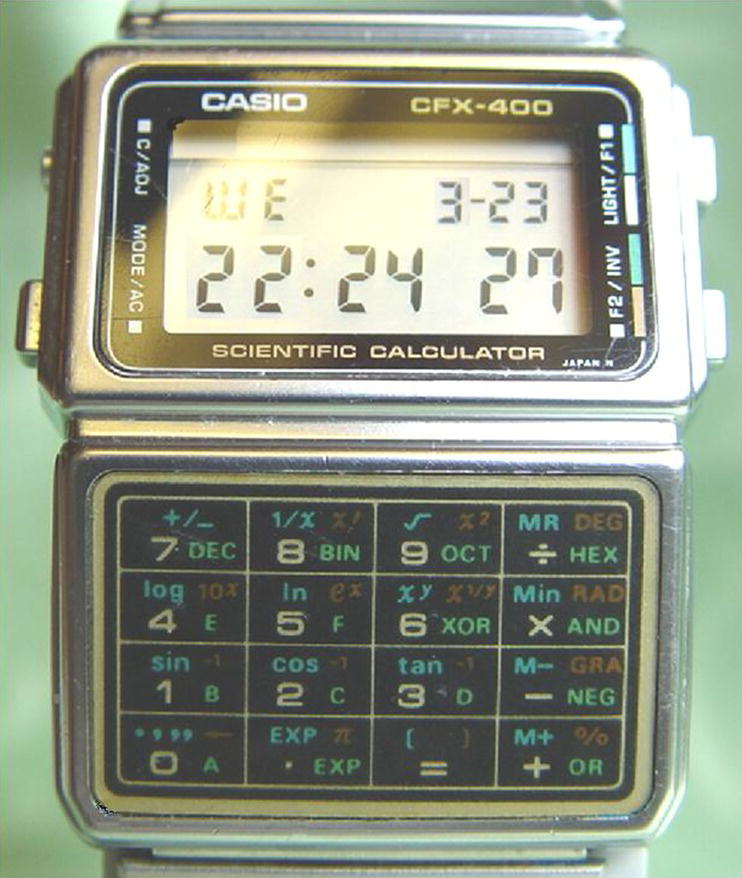Chapter 2 Wearable Computing Background and Theory
2.1 Wearable Computing History
Depending on how we define the concept of Wearable Computing, how long it has been around can range from hundreds of years to several decades. At some level, even a wrist watch can be considered to be a computing device—it computes the time for you and is always on, ready, and available. But the term computing device or computer is characterized today by the existence of a processor (CPU) within—which is missing in the case of, say, a mechanical watch. At the same time, the earliest computers were mechanical and electromechanical in nature. All this can make it harder to arrive at one definite answer that is widely acceptable.
Since the 1980s, the consumer marketplace has certainly seen sophisticated digital watches with scientific calculation, games, audio, and video capabilities. Nelsonic Industries, a US company, produced a “game” watch in the 1980s, which served both as a timepiece as well as an electronic game device. Casio, the Japanese electronic company, offered a wide variety of digital watch models including the Casio CFX-400 scientific calculator watch as well as the Casio Databank CD 40, both of which were introduced in the early to mid-1980s (Figure 2-1).

Figure 2-1 Casio CFX-400 watch manufactured circa 1985.
Attribution: By Septagram at en.wikipedia [Public domain], from Wikimedia ...
Get Wearable Android: Android Wear and Google FIT App Development now with the O’Reilly learning platform.
O’Reilly members experience books, live events, courses curated by job role, and more from O’Reilly and nearly 200 top publishers.

